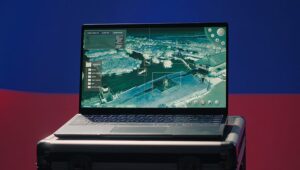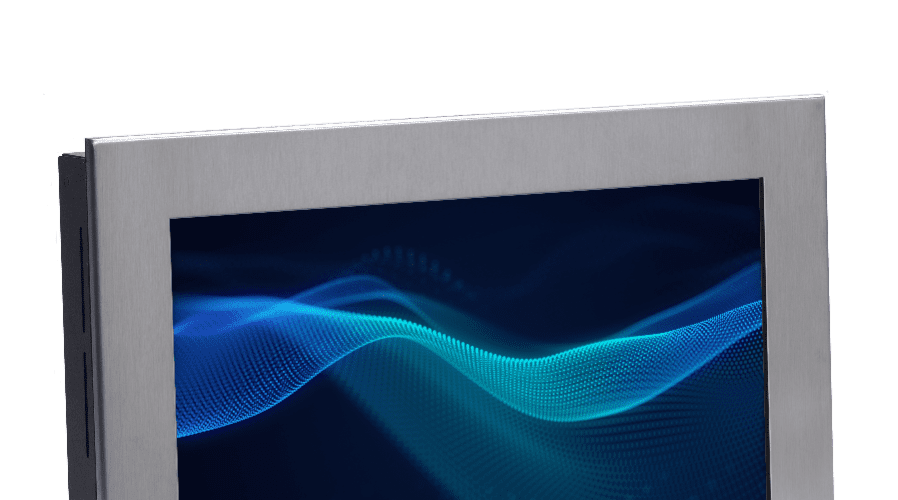As technology advances, so does the demand for high-quality displays of varying shapes, sizes, and applicability. Thin-film transistor (TFT) LCD monitors and displays have become the industry standard for a wide range of demanding applications, from industrial use to consumer electronics. But what exactly is a TFT LCD monitor, and how does it differ from other display types like standard LCD or IPS? We will examine this question and more so you can make an informed decision when investing in your next display solution.
What is a TFT LCD Monitor?
A TFT LCD monitor is a type of liquid crystal display that uses Thin Film Transistor technology to enhance image quality. Each pixel in a TFT LCD display is controlled by a tiny transistor, which allows for faster response times, better contrast, and improved color reproduction and visibility compared to standard LCD screens. This makes TFT technology the preferred choice for applications that demand clarity and precision.
Key Features of TFT LCD Monitors
TFT LCD monitors are categorized by their advanced performance, durability, and versatility, making them an essential choice across numerous industries, including industrial, medical, military, and transportation applications. Their unique features and benefits cater to environments requiring precision, reliability, and efficiency. Below are some of the standout qualities that make TFT LCD monitors an industry favorite:
Enhanced Image Quality: TFT technology utilizes individual transistors for each pixel, allowing for greater control over brightness and color. This ensures sharp visuals with vibrant, true-to-life colors and deep contrasts, which are especially valuable in fields like medical imaging and design, where accurate color representation is critical.
Fast Response Times: TFT LCD monitors’ quick pixel response minimizes motion blur, making them ideal for dynamic environments such as gaming, industrial control systems, and automotive displays. This rapid response enhances usability in real-time applications requiring precision and clarity.
Energy Efficiency: Compared to older CRT (Cathode Ray Tube) displays, TFT LCD monitors are significantly more energy-efficient. Their reduced power consumption not only lowers operational costs but also contributes to a smaller environmental footprint, aligning with sustainable practices.
Compact and Lightweight Design: Thanks to their slim profiles and lightweight construction, TFT LCD monitors are highly versatile and easy to install in a variety of settings. This compact design makes them suitable for applications with limited space, such as cockpit displays, kiosks, and portable medical devices.
Durability for Demanding Environments: Industrial-grade TFT LCD monitors, like those from AbraxSys, are built to withstand harsh conditions. They offer ruggedized designs that resist dust, moisture, extreme temperatures, and vibrations, ensuring consistent performance in environments such as factories, oil rigs, and outdoor installations.
Wide Viewing Angles (Optional Upgrades): Many TFT LCD monitors offer optional enhancements, such as IPS (In-Plane Switching) technology, to improve viewing angles without compromising color quality. This is particularly beneficial for collaborative environments or scenarios where the screen is viewed from multiple perspectives.
With their unmatched combination of performance, efficiency, and versatility, TFT LCD monitors continue to revolutionize how industries leverage display technology.
TFT LCD Displays vs. Other Technologies
When choosing a display, it’s essential to consider the strengths and limitations of various options. One of the most common comparisons is IPS LCD vs. TFT and TFT vs. standard LCD technologies. Each serves specific applications, and understanding their differences can help you make the right choice.
IPS LCD vs. TFT
Viewing Angles: IPS displays are renowned for their wide viewing angles, which maintain color accuracy and clarity even when viewed from extreme positions. While TFT LCD displays offer slightly narrower viewing angles, they compensate with higher contrast ratios, making them ideal for focused, single-user applications such as industrial controls or point-of-sale terminals.
Color Accuracy: IPS displays excel in color fidelity and consistency, which is why they are often favored in applications like professional photo editing and multimedia. However, TFT displays provide a more cost-effective solution for environments where slight variations in color are acceptable but performance and durability are critical.
Applications Compared
IPS Displays: Common in consumer electronics, high-end monitors, and collaborative workspaces where color and viewing angles are priorities.
TFT Displays: Widely used in rugged and industrial environments due to their energy efficiency, durability, and superior contrast for operational clarity.
TFT vs. Standard LCD
Technology Difference: TFT LCD displays are an advanced subset of traditional LCD technology. By integrating transistors for each pixel, TFT technology ensures precise control, resulting in sharper images and faster response times. In contrast, standard LCDs lack this individual pixel control, leading to lower overall performance.
Performance Compared
Standard LCDs: Often sufficient for basic tasks, they fall short in delivering the sharpness, brightness, and response time required in more demanding applications.
TFT LCDs: Known for their superior performance, these displays are a staple in environments where clarity and quick response times are critical, such as automotive dashboards, military-grade monitors, and medical devices.
Use Cases Compared
Standard LCDs: Suitable for basic consumer products like digital clocks or simple signage.
TFT LCDs: Dominate applications requiring robust and high-performance displays, including industrial controls, aviation systems, and portable diagnostic equipment.
Applications for TFT LCD Monitors
TFT LCD monitors are indispensable in industries that demand robust, reliable, and high-performance display solutions. These displays excel in diverse, mission-critical environments, including:
Military and Defense
Ruggedized displays for command centers, field operations, and vehicle-mounted systems.
Industry-specific Advantages: MIL-SPEC compliance for durability, sunlight readability for outdoor use, and wide temperature operation for extreme conditions.
Marine and Offshore
Navigation systems, control panels, and entertainment systems aboard ships.
Industry-specific Advantages: Waterproof and corrosion-resistant designs, anti-glare coatings for enhanced visibility, and ruggedized casings for harsh marine environments.
Medical Devices
Diagnostic equipment, patient monitoring, and surgical displays.
Industry-specific Advantages: High-resolution displays for detailed imaging, superior color accuracy, and easy-to-clean surfaces to meet hygiene standards.
Industrial Automation
Factory control systems, monitoring stations, and operator interfaces.
Industry-specific Advantages: Durable casings to withstand harsh industrial conditions, touch screen options for intuitive operation, and compatibility with legacy systems for seamless integration.
TFT LCD Displays Frequently Asked Questions

As a widely used technology, TFT LCD displays often spark curiosity about their features, applications, and differences from other display types. Below, we’ve compiled answers to some of the most common questions to help you better understand this versatile technology.
What is a TFT LCD monitor used for?
TFT LCD monitors are used in applications requiring high image quality, durability, and fast response times, such as industrial controls, medical imaging, and military systems.
How does a TFT LCD display differ from an IPS display?
While both are types of LCD displays, IPS technology provides wider viewing angles and better color consistency, whereas TFT offers higher contrast and is more cost-effective.
Is a TFT LCD monitor suitable for outdoor use?
Yes, especially with features like sunlight readability and rugged casings, which are available in AbraxSys’ outdoor display lineup.
What sizes do TFT LCD monitors come in?
AbraxSys offers a wide range of sizes, from small 6.5-inch displays to large 24-inch monitors and beyond.
Choosing the Right TFT LCD Monitor
Selecting the right TFT LCD monitor involves understanding your specific needs. Key considerations include:
Environment: Will the monitor be used in harsh conditions?
Size: What screen size fits your application?
Features: Do you need touch functionality, high brightness, or a specific resolution?
AbraxSys provides expert guidance to help clients choose the perfect monitor for their applications, ensuring optimal performance and longevity.
Why Choose AbraxSys for TFT LCD Monitors?
AbraxSys specializes in designing and manufacturing high-performance TFT LCD monitors tailored for industrial, military, marine, and other critical environments. Our products go beyond the standard offerings by incorporating advanced features and rugged designs to meet the most challenging requirements, including:
Rugged TFT LCD Displays: Engineered to withstand extreme temperatures, vibrations, and environmental conditions.
Customizable Solutions: From size to functionality, we tailor our TFT monitors to fit specific client needs.
Wide Range of Sizes: From compact displays to large-format monitors, we cover diverse applications.
Cutting-Edge Technology: Our monitors integrate the latest TFT advancements, ensuring superior performance and reliability.
TFT LCD monitors are the backbone of many industries, offering a versatile and reliable solution for diverse applications. AbraxSys stands at the forefront of this technology, delivering high-quality, ruggedized monitors that meet the most demanding requirements. Whether you’re comparing display options or exploring the benefits of TFT vs. standard LCD, AbraxSys has the expertise and product range to guide you to the best choice.
Ready to upgrade your display technology? Contact us today to find the exact display solution for your needs.




